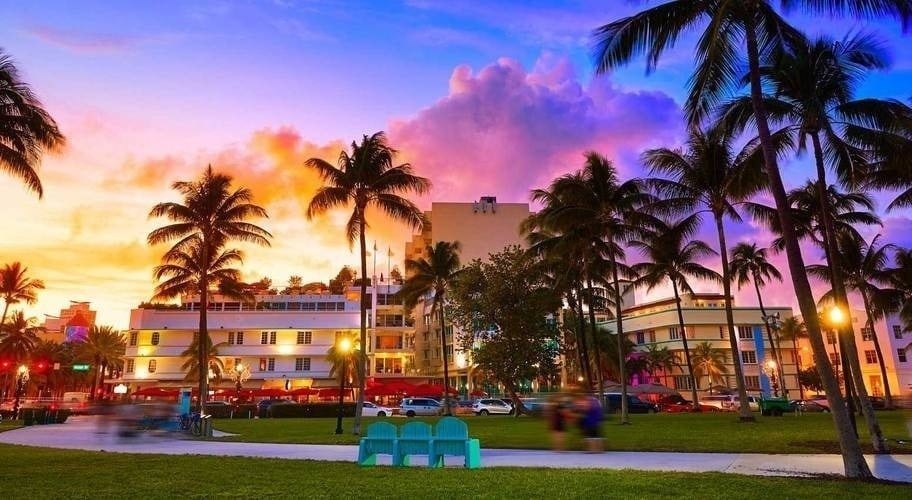Christmas traditions in Mexico
Entertainment 25/11/2023
The Christmas holidays are here and with them the opportunity to live them “the Mexican way.” These charming traditions are celebrated with passion and joy in the streets and neighborhoods across the country. This part of Mexican culture, like almost all, is based on the rich mix of indigenous and Spanish influences that offer a unique experience, full of color, flavor, and spiritual fervor.
Christmas in Mexico is also decorated with the warmth of its people and the depth of their beliefs. Thus, these mixtures create an unforgettable experience for those who have the privilege of participating in them.
On this occasion we tell you about the meaning of the traditions of the season: the posadas, pastorelas, the piñatas, the Three Kings’ bread, and the Christmas bonuses (known as aguinaldos), which you can enjoy at the Christmas parties that we have for you and your family at Park Royal Hotels & Resorts.
Recreating the pilgrimage of Mary and Joseph, this is one of the most emblematic traditions of Mexican Christmas. The posadas are representations of that biblical passage when pilgrims seek refuge.
These colorful processions, which take place during the nine days leading up to Christmas Eve, involve the local community. Neighborhoods and families come together to sing Christmas carols, carry candles, and recreate the search for a place for the birth of Baby Jesus. Mexican hospitality shines, families open their doors to participants and offer them typical food, such as tamales and traditional drinks such as ponche.
During these holidays, bonuses (aguinaldos) are also given mostly to kids. This tradition have their origin in Rome, and with the Spanish conquest the custom of “masses of aguinaldo” was created. In them, pastorelas were represented and at the end of the show attendees were given small gifts. Over the years these gifts became small bags of sweets that contained typical fruits of the time of year, such as canes, tejocotes, peanuts and traditional snack sweets.
Pastorelas are a tradition deeply rooted in Mexican Christmas. They are theatrical performances that relive the story of the birth of Jesus with a unique touch of satire and mockery. In these works, religious elements are combined with humor and not only illustrate the fight of good against evil, with shepherds representing faithful followers and devils who try to divert them from the right path, but they are also used as a tool to transmit values. They are moral and religious teachings in an accessible and entertaining way.
Piñatas are much more than just decorations, they have become a link to the country's rich cultural heritage. These colorful structures, made of paper or clay and decorated with shiny paper, hide a world of sweets, small toys and fruits.
Its meaning goes beyond the pleasure of sweets; they are a metaphor for faith and hope. Breaking the piñata represents the fight against evil and sins and the reward that comes when it breaks.
The the Three Kings’ bread is a delicacy that is typically eaten on January 6 to celebrate the arrival of the Three Wise Men. It is a bagel decorated with caramelized fruits, a sweet named “ate”, and stripes of sugar; inside, it hides small representative figures of baby Jesus. Cutting the bread is a special ceremony because the attendees want to find one of these figures in their portion of bread, which is considered a blessing and turns the lucky ones into godparents of the child during the Candelaria festivities, which occur in the month of February.
These are the most common Christmas traditions in Mexico. We hope we have left you wanting to live them and even more so, to practice them with us at our Grand Park Royal Cancún, Cozumel and Puerto Vallarta; or in Park Royal Beach Cancún, Huatulco and Ixtapa. In all of them you will find menus and activities planned so that you can experience a New Year's Eve full of this culture.
Christmas in Mexico is also decorated with the warmth of its people and the depth of their beliefs. Thus, these mixtures create an unforgettable experience for those who have the privilege of participating in them.
On this occasion we tell you about the meaning of the traditions of the season: the posadas, pastorelas, the piñatas, the Three Kings’ bread, and the Christmas bonuses (known as aguinaldos), which you can enjoy at the Christmas parties that we have for you and your family at Park Royal Hotels & Resorts.
A trip through the posadas
Recreating the pilgrimage of Mary and Joseph, this is one of the most emblematic traditions of Mexican Christmas. The posadas are representations of that biblical passage when pilgrims seek refuge.
These colorful processions, which take place during the nine days leading up to Christmas Eve, involve the local community. Neighborhoods and families come together to sing Christmas carols, carry candles, and recreate the search for a place for the birth of Baby Jesus. Mexican hospitality shines, families open their doors to participants and offer them typical food, such as tamales and traditional drinks such as ponche.
During these holidays, bonuses (aguinaldos) are also given mostly to kids. This tradition have their origin in Rome, and with the Spanish conquest the custom of “masses of aguinaldo” was created. In them, pastorelas were represented and at the end of the show attendees were given small gifts. Over the years these gifts became small bags of sweets that contained typical fruits of the time of year, such as canes, tejocotes, peanuts and traditional snack sweets.
The fight between good and evil: the pastorelas
Pastorelas are a tradition deeply rooted in Mexican Christmas. They are theatrical performances that relive the story of the birth of Jesus with a unique touch of satire and mockery. In these works, religious elements are combined with humor and not only illustrate the fight of good against evil, with shepherds representing faithful followers and devils who try to divert them from the right path, but they are also used as a tool to transmit values. They are moral and religious teachings in an accessible and entertaining way.
A metaphor: piñatas
Piñatas are much more than just decorations, they have become a link to the country's rich cultural heritage. These colorful structures, made of paper or clay and decorated with shiny paper, hide a world of sweets, small toys and fruits.
Its meaning goes beyond the pleasure of sweets; they are a metaphor for faith and hope. Breaking the piñata represents the fight against evil and sins and the reward that comes when it breaks.
A delicious tradition
The the Three Kings’ bread is a delicacy that is typically eaten on January 6 to celebrate the arrival of the Three Wise Men. It is a bagel decorated with caramelized fruits, a sweet named “ate”, and stripes of sugar; inside, it hides small representative figures of baby Jesus. Cutting the bread is a special ceremony because the attendees want to find one of these figures in their portion of bread, which is considered a blessing and turns the lucky ones into godparents of the child during the Candelaria festivities, which occur in the month of February.
These are the most common Christmas traditions in Mexico. We hope we have left you wanting to live them and even more so, to practice them with us at our Grand Park Royal Cancún, Cozumel and Puerto Vallarta; or in Park Royal Beach Cancún, Huatulco and Ixtapa. In all of them you will find menus and activities planned so that you can experience a New Year's Eve full of this culture.














